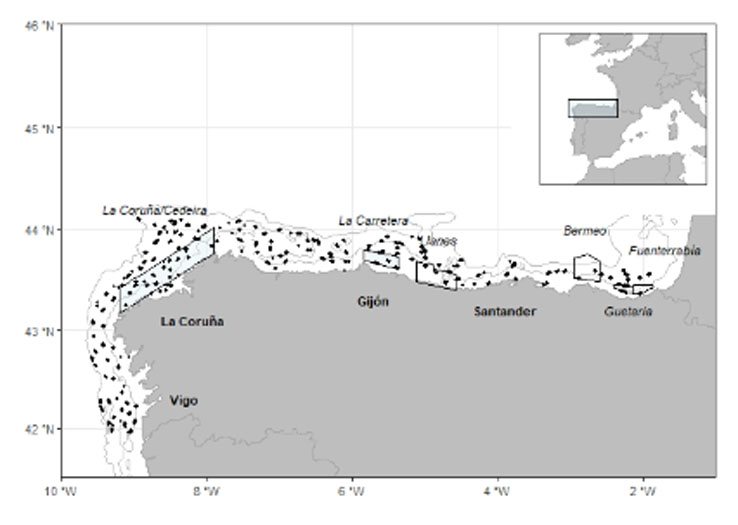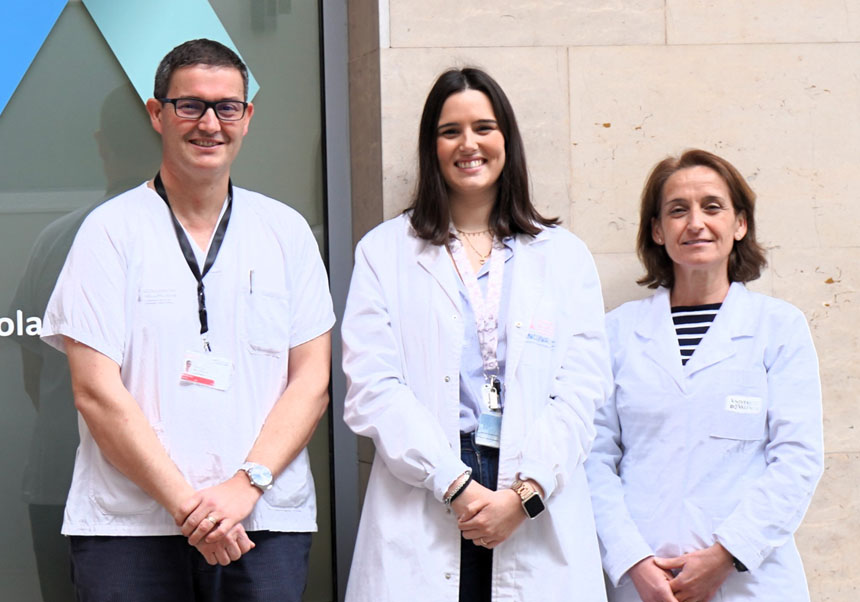The University of Valencia collaborates in an innovative model designed to locate hake breeding areas and find out how they from year to year.
- Press Office
- February 3rd, 2021

Researchers from the University of Valencia are taking part in a study designed to locate hake breeding areas and find out how they vary from year to year. The research is being carried out in collaboration with the Vigo and Santander centres of the Spanish Institute of Oceanography (IEO) and the Institute of Marine Research (IIM-CISC). The project focuses on the breeding areas of European hake (Merluccius merluccius) in the Northern Iberian Peninsula, and has been published in the journal 'Frontiers in Marine Science'.
The protection of fish hatcheries has proven to be a powerful tool to manage fisheries efficiently as it can contribute to improving the recruitment of target species.
In order to identify and map potential breeding areas, it is essential to gain a sound knowledge of the spatio-temporal relationships between the species and the environment.
To do this, scientists have spent more than 10 years gathering data on catches of hake recruits (which measure less than 12 centimetres). Additionally, in order to understand and predict their spatial and temporal distribution, they have studied the existing relationships between their presence and environmental variables such us depth, water temperature and salinity.
David Conesa, Professor of Statistics and Operations Research at the Faculty of Mathematical Sciences of the University of Valencia, and Francisco Izquierdo, PhD student with a degree from the Universitat de València., participated in the research.
The study shows that there is a main breeding area located along the continental shelf of the Gulf of Ártabro, off A Coruña, which has been maintained over time. Other dense areas of hake recruits have also been identified but these vary from year to year depending on environmental conditions. ‘Altogether, we have identified three persistent and three intermittent areas over the years which partly coincide with the trawl closure areas.’, points out Francisco Izquierdo, PhD student at the IEO's Vigo Oceanographic Centre and first author of the article. ‘These results demonstrate how significant the proposed dynamic spatio-temporal modelling is, as the effect of environmental conditions over time can vary the distribution, shape and abundance of hake hatcheries’, the scientist adds.
As Izquierdo concludes, the study ‘can contribute to improving fisheries management from several points: firstly, by improving knowledge of the spatio-temporal distribution of hake recruits in the Northern Iberian Peninsula; secondly, by helping to define potential closed fishing areas; and thirdly, by improving the abundance indices in the assessment models for species such as hake".
The research was carried out in the framework of the IMPRESS project.
Reference: Izquierdo, F., Paradinas, I., Cerviño, S., Conesa, D., Fernández, A., Velasco, F., Preciado, I., Punzón, A., Saborido-Rey, F., Pennino, M.G. (2021) Spatio-Temporal Assessment of the European Hake (Merluccius merluccius) Recruits in the Northern Iberian Peninsula. Front. Mar. Sci. 8:614675. doi: 10.3389/fmars.2021.614675
















